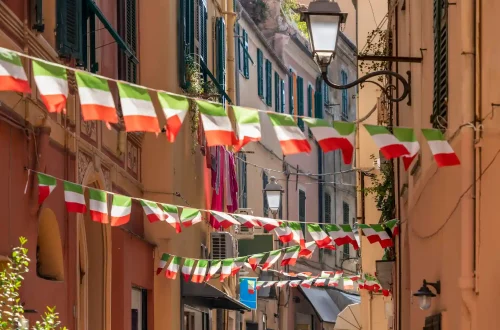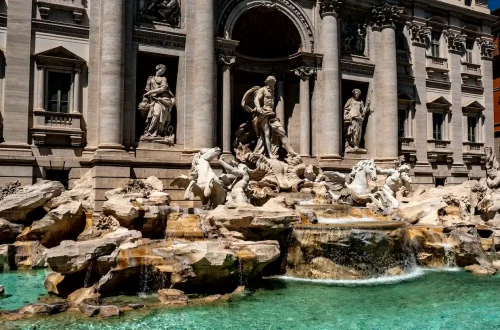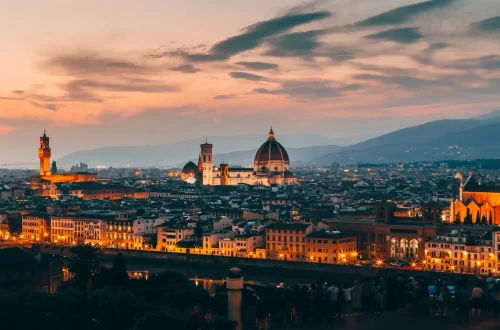The Italian embassy in Washington, D.C., is located at 3000 Whitehaven Street NW, in the Embassy Row neighborhood. It serves as the central diplomatic mission of Italy in the United States, handling matters of bilateral relations, cultural exchanges, and high-level consular services.
The Italian Embassy (Ambasciata d’Italia) in Washington, DC is the largest bilateral embassy of Italy worldwide. Located in the heart of the U.S. capital, the embassy is headed by Ambassador Mariangela Zappia.
This embassy oversees a vast network, coordinating the activities of nine consulates, five cultural institutes, five Italian Trade Agency offices, and two Italian Tourist Board offices.
Functions of an embassy
The functions of an embassy are defined by the Vienna Convention on Diplomatic Relations, which was established on April 18, 1961.
According to this international treaty, the primary roles of an embassy include representing the sending State (Italy) in the receiving State (the United States), protecting the interests of Italy and its nationals within the framework of international law, negotiating with the government of the receiving State, and gathering information on conditions and developments in the receiving State to report back to the sending State.
Additionally, the embassy promotes friendly relations and aims to develop economic, cultural, and scientific ties between Italy and the U.S.
Consular services
The embassy’s Consular Section offers a range of services to Italian and non-Italian citizens within its jurisdiction. These services include issuing passports and visas, providing assistance in emergencies, and notarizing documents.
Take advantage of specialized assistance to secure your passport for a borderless future.
Basic requirements and necessary documentation for Italian citizenship
As of 2025, with the enactment of Law No. 74/2025, Italian consulates and municipalities have ceased accepting applications for citizenship by descent. All administrative procedures are set to be centralized under a newly established governmental body; however, its structure, operational framework, and specific guidelines are still pending.
As a result, all existing consular and communal queues were formally dissolved, leaving judicial proceedings as the only available pathway to obtaining Italian citizenship. Applicants who intend to challenge Law 74/2025 are strongly advised to retain documentation—such as a receipt or proof of their original place in line at a consulate—as part of their legal strategy.
It is important to emphasize that the outcome of these legal challenges remains uncertain, as Italian courts continue to evaluate the constitutionality and retroactive implications of the law.
If you choose to apply for Italian citizenship through the courts, you’ll need to gather key documents that trace your ancestral line. These include birth, marriage, and death certificates for your Italian relative—whether a parent or grandparent—and each subsequent generation leading up to you.
How io.citizen can help
For those considering the judicial route, companies like io.citizen can offer comprehensive advisory support. io.citizen provides expert guidance through each step of the judicial process, ensuring that all documentation is correctly prepared and submitted.
Our services can help alleviate some of the stress and uncertainty associated with the citizenship application process, making it a smoother and more efficient experience.
Benefits of holding an Italian passport for U.S. residents
Obtaining an Italian passport offers numerous benefits, especially for U.S. residents.
Visa exemptions and international mobility
An Italian passport grants the holder visa exemptions and facilitates international mobility within the European Union. This means that U.S. residents with Italian citizenship can travel, live, and work freely within EU member countries without the need for additional visas or permits. This increased mobility can open up a world of opportunities for both personal and professional growth.
Take advantage of specialized assistance to secure your passport for a borderless future.
Enhanced professional opportunities
Dual citizenship can significantly enhance professional opportunities in Europe. With an Italian passport, individuals can access the European job market, which can be especially beneficial for those seeking career advancement or new experiences abroad. The ability to work in any EU country without restrictions is a valuable asset in today’s globalized world.
Consider professional assistance
For those facing complex situations or looking to expedite the citizenship process, hiring a specialized consultancy like io.citizen can be a wise decision. Our professional advisory services can provide tailored support, helping applicants avoid common pitfalls and ensuring that all necessary steps are followed correctly.






